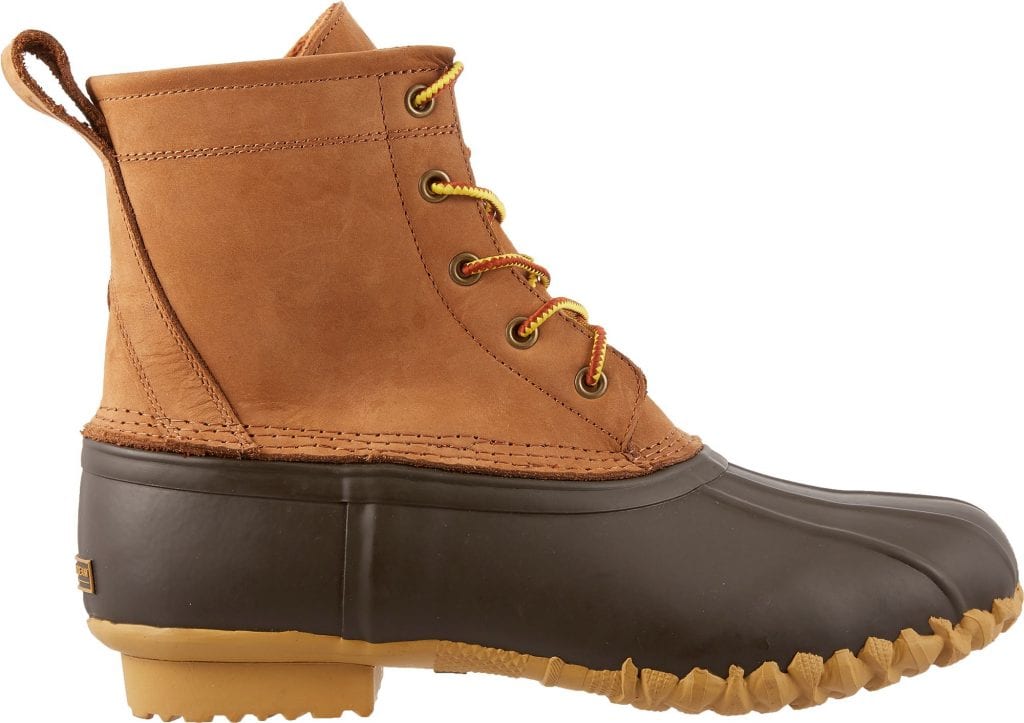The fall foliage had its moment, Thanksgiving had you floundering on the sofa in a turkey-induced coma, and you’re still trying to work out how to fit in all the holiday drinks, parties and celebrations before the end of the year. You may have noticed that it’s also getting colder outside, maybe much, much colder than what you’re used to.
If this is your first time experiencing winter in America, and you’re worried that your trusty old coat from home may not be up to keeping you warm until May (especially if you are living somewhere like New York City or Boston), you might be feeling a little unsure of how to prepare for it. Never fear; we've got a handy guide for getting you (and your apartment) ready for it.
Everything you need to know about winter in America
The cold can be great fun if you follow these simple rules and take care of yourself!
How to dress for winter
1. You need to buy a good winter coat
If we can give one tip about choosing a coat, it’s that you shouldn’t get the cheapest option. We did this in our first year and can testify that it was a disaster. You don't have to buy the fanciest Canada Goose/Mackage/Moncler jacket either, just be sure to buy something that doesn’t cheap out on materials. You won’t know how much you’ll appreciate a quality sealed zipper until the freezing winds rip down 3rd Ave and sear through your chest! These jackets have been our go-to since that disastrous (cold) first year and have never let us down (those Canadians really know how to keep you warm!).
Look for high-quality down with a “fill power” of 500+. Most down jackets should also have a temperature rating on them, so it's a good idea to check that these cover you down to at least freezing temperatures (that windchill is no joke). Wirecutter just released this year's pick of down jackets, with great recommendations for luxe and budget options.
If you missed the end-of-season winter sales (these are a good place to get good quality winter coats on the cheap – mark your diaries now!), we recommend stores like Century 21 (yes, it’s re-opened!), Saks OFF FIFTH and T.J.Maxx for discounts on well-known brands. It's also a good idea to keep your eye out for people fleeing the cold and selling their jackets on Facebook or look for second-hand options from online marketplaces like Poshmark.
For more technical jackets, outdoor stores such as REI are an excellent option (REI also has an online outlet that sells last season’s stock and a Re/Supply store for used gear.)
It's going to get wet and rainy as well as snowy, so you might consider buying a waterproof shell from Uniqlo, L.L.Bean or Eddie Bauer for those times when you need an extra functional layer.
If a fancy woolen or cashmere coat is more your style, look for something that will allow you to add lots of layers underneath—you’ll want to be able to bend your elbows to drink that peppermint drizzle latte, so sizing up is always a good option.
Be sure to try your coat on in person or confirm that you can return it if it doesn’t fit. You’ll wear that thing almost every day for many months and want it to be functional (and look good).
At the end of the season, it’s a good idea to check your coat for any rips or damage and get it cleaned before storing it away so you don’t have any nasty surprises next year.
2. You need to buy thermals (and boots, hats, gloves and a scarf)
THERMALS – (Do it). We could write endless articles about the benefits of thermals underneath your clothes. Go to Uniqlo (we love this place) and buy yourself some HEATTECH. They’re the best. We like the “ULTRA WARM” stuff, but that's up to you. They’re worth every penny because we wear them every single day under everything. Layers are the best thing you can do to keep the cold out. Just remember, you want to be warm and cosy but not sweating because that leads to all kinds of other problems like overheating and becoming soaked in your cold, sweaty, wet clothing (trust us, yuk) and hypothermia (if you are very unlucky).
WATERPROOF BOOTS (aka, this is not time for your Ugg boots to go outside) – Again, you will have to work within your budget, but we recommend getting high-quality, waterproof boots (you're sensing our theme now – we know it's expensive). You want to be sure your boots aren’t going to leak cold air, slush or snow into your warm tootsies. You also want them to have a good grip to keep you safe on all those slippery winter surfaces. Popular brands include Sorel, L.L.Bean, and Timberland. You're going to hear the term “duck boots”, too, and that means these:

Yes, they look utterly ridiculous, and we haven't bought them, but everyone will tell you that they're the best for when it gets slushy… and it's going to get slushy.
Make sure there’s plenty of room in your boots so you can add a nice pair of thick socks. Some of our favourite socks for winter (and summer!) are Darn Tough Merino socks. They are warm and wicking and have a lifetime guarantee. Remember, you want cosy but not sweating!
Check the stitching and seams of your boots throughout the season to ensure the salt and antifreeze aren’t eating them away. It’s always good to give them a quick rinse when you get home after schlepping through the slush all day, and you defintely need to do this before storing them away for next season.
HATS – Believe us, hats make a big difference in the cold (and your ears will thank us). One of our best buys last year was this polar fleece-lined hat that really keeps the wind off your noggin. Maybe you don’t love rocking a hat head into your 10am meeting. There are a heap of earmuffs and headbands that are great. Also, a reminder that just because you aren’t heading out to the beach, sunscreen is ALWAYS a good idea, even in winter, especially if you’re hitting the slopes or hiking.
GLOVES – Do you like your fingers? Well, you should get some gloves because otherwise, they might fall off. Try and find ones that will work with your cell phone, otherwise, you're going to be taking them on and off so often, and they become basically useless. Again, fleece or wool and cashmere-lined gloves are the warmest, and you can find affordable pairs at most clothing stores. We like REI’s Co-op Flash Power Stretch Gloves because they can be used on their own or as a liner that you layer under thicker gloves.
SCARVES – Yes, you’ll need one. Again, think natural fibers. This extra cosy layer will keep your neck warm and help trap the heat radiating up from your toasty body. You can also pull it up over your nose and mouth when it gets too cold to breathe (and helps stop your snot from freezing in your nose).
UMBRELLAS – For those times when a waterproof coat isn't the stylish go-to. BUT PLEASE DON'T BUY A DAMN GOLF UMBRELLA IF YOU LIVE IN A CITY LIKE NEW YORK. NOBODY NEEDS THOSE GIANT THINGS POKING US IN THE EYE. Again, Amazon has lots of them. Make sure you get one that can’t blow inside out because it will happen when you wander to a bar too close to the Hudson. It's so windy over there!
3. Dressing and caring for your bestie (aka your dog)
Winter can be hard for your four-legged bestie, especially if they aren’t used to the cold. You’ll notice that when the temperatures get colder, anti-freeze and salt are spread on the road and pavements to help us stay up on our feet and not slip down the sidewalk on our butts. This is helpful to us, but your dog’s paws won’t be pleased. That stuff is shoe-melting bad, and Fido’s paws will take a beating from it with burns from the chemicals in the anti-freeze (some buildings use pet-friendly ingredients, but you won’t know which is which).
You also don’t want them licking it off their paws once you get home because it’s very toxic and can be fatal. Two options can help.
The first is using a paw wax like Mushers that puts a barrier between their sensitive pads and the chemicals (but doesn’t stop the licking, sigh), or you’re going to need some dog boots. These range from cheap balloon-style Pawz boots to fancier options like Canada Pooch. Your dog will most likely hate them the first few times (send us your videos!), but they’re worth the struggle (and the treat bribes) to keep them safe.
Does your dog need a coat? This depends on the breed, age and the density of their coat. The American Kennel Club has great advice on dog coats and keeping your dog safe in colder weather.
How to prepare your home and apartment for the cold
When it starts to get cold (or if you're extra prepared, BEFORE), be sure to check that you've cleared everything away from where the heat comes out. We don't want to start any fires. Check any filters that are in place for your heating as well to ensure that the year of dust and gross hasn't clogged anything up.
Many venues throughout the city will “winterize”, but your landlord should let you know if that's something you need to worry about (it's worth getting in touch with them before your first winter to make sure nothing is expected of you). Frozen pipes = Bad news.
1. If you can remove your A/C unit from your window and seal up the space, you should do that
What you're really trying to do is make sure that no cold air can get into your place, ruining all that delicious warmth. If it's recently rained, be careful because it may have water in it that will then spill all over you and your floor. Similarly, if you've already had days sub-zero, it may have become frozen inside, so be sure to use some caution.
2. Turn your fans into reverse
We bet some of you didn't know this one! When the air blows straight down, that keeps you cool, but if your fan has a reverse switch (which is sometimes found on the fan itself), it can blow clockwise and then take all the warm air that's pooling uselessly in your roof and blow it down to you.
3. Check for drafts around the place
More importantly, if you can work out a way to seal them up, do that. You might have to buy one of those funny sausage logs that your Grandma had at her front door (They're called “draft snakes”.)
4. Anti-freeze
Don't use anti-freeze unless specifically instructed to or if you really know what you're doing. It's dangerous to people, animals, and the environment and can lead to many more problems.
5. Mind your thermostat
If you have the option to change the temperature, try and keep it as cool as you can before you feel cold (put on a sweater, ta-da!). This will save LOTS of money on your heating bill, and you can then spend that on silly things you don't need instead.
6. Does it feel like your skin is falling off? Invest in a humidifier
Your skin has started to feel tight and scratchy, and you keep giving your pets electric shocks every time you pass them by. The dry winter air can cause all kinds of problems, and we’ve found that a humidifier has helped with all these things. We recommend this humidifier, which allows you to monitor your home’s humidity levels and control it via your phone when you’re out. We couldn’t believe we waited this long to buy one, and it’s been a total game changer to our lizard skin and six months of static shocks.
Hot tip for that skin: This hand cream and this lip balm are our constant companions during winter.
7. Buy a boot tray
These are great to have at your front door or entryway so you aren’t schlepping in the water, mud and chemicals from the streets onto your nice floors.
8. Invest in some flannel sheets… or maybe an electric blanket
These aren’t just for your Granny. You’ll thank us if your heating feels less than ideal on these cold winter nights. L.L.Bean’s range of flannel sheets are Wirecutter approved and brands at Target also have good options. Amazon has a heap of choices of electric blankets… just remember to turn that thing off!
9. Have an emergency kit ready (at home and in your car)
In case of power outages at home or bad weather delaying your car trip, having a basic emergency kit at home and in your car is a good idea all year round. For the home, you should ensure you have plenty of drinking water, batteries, flashlights, non-perishable foods, medications, and pet supplies. For your car, add blankets and towels, a change of clothes, spare cash and a first-aid kit. The US Government has a great website with checklists and advice on how to stay safe in the event of winter storms.
Other important winter survival tips
1. Know how to walk properly and what to avoid outside
- Day one: Snow falls, and it's magical. It even looks nice on the garbage bags on the sides of a street. Post those pics on Insta while you have the chance!
- Day two: The snow on the ground is now black, and you're worried that if you touch it, it might drag you in.
Snow turns to slush FAST in a city, so you need to be ready for this. It's equal parts slippery and gross. If you're having a lot of trouble walking on it, take smaller steps and walk like a penguin with your weight over your front foot, that'll help you from looking like an amateur. If you aren’t sure how deep that puddle of death is at the corner, it’s going to be deep (trust us).
Hot tip: When stepping onto slush, see if you can see other footprints. This will tell you that there is solid footing underneath versus a void to the centre of the planet.
Be extra careful when crossing the street in icy weather. Yes, you’re doing the right thing crossing at the crosswalk, but the vehicles on the road may not be able to stop quickly due to the slippery conditions and have been known to slide across intersections. We’d like all of your bones to stay the way they are.
2. Be ready for every building to have its heating set to tropical furnace when you enter
When you walk into any building, it's going to be like you just arrived in the Bahamas, and it takes some getting used to (this is where your layers are going to help!). Our advice is to walk slower before you arrive at your destination and start unzipping your jacket outside so you cool down before entering the sweatbox.
3. Avoid going out in blizzards
This is common sense, right? Adhere to the warnings that your weather app gives you (We recommend AccuWeather for the most accurate updates). This one really should be self-explanatory, but if it’s really gross outside, stay inside as much as possible.
4. Hypothermia and frostbite are no joke
We don’t want you to ever get to this level of cold, but if you do, here are the warning signs to watch out for.
- Frostbite causes loss of feeling and color around the face, fingers and toes. Signs include numbness, white or greyish-yellow skin, firm or waxy skin.
- What should I do if I think I have frostbite? Go to a warm room. Soak in warm water. Use body heat to warm. Do not massage or use a heating pad. Get medical advice STAT.
- Hypothermia is an unusually low body temperature. A temperature below 35℃ is an emergency. Signs include shivering, exhaustion, confusion, fumbling hands, memory loss, slurred speech or drowsiness.
- What should I do if I think I have hypothermia? Go to a warm room. Warm the center of the body first—chest, neck, head and groin. Keep dry and wrapped up in warm blankets, including the head and neck. Get medical advice STAT.
5. Code Blue alerts and being a good human
A Code Blue alert is issued when temperatures drop to dangerous levels, during ice storms, freezing rain, or more than six inches of snow. So, if you see someone out in the cold doing it tough, you should be a good samaritan and call 311. An outreach team will be sent to help them make it to a shelter or drop-in center. It goes without saying that if someone looks like they’re in need of medical assistance, you should defintely call 911.
6. Be kind to others and reach out if you need help
Tip your delivery people more (they're trudging through all that slush just for you). Here's Josh’s guide to tipping. Say hello to the people in your building, and keep the volume down for your neighbors. All of this will go to making everyone's winter a good one, including yours!
Most importantly, though, keep your spirits up by engaging with communities online and wherever you can find them. Winter is a tough time for everyone, especially if you're new or without a good network of close friends to call in on. Find networks like America Josh (you’re here already!) and all the other expat groups we connect with, and find what they're up to. Maybe they're organizing an event for those who want to connect, maybe they're running a drinks night this week. Say “yes” to everything you can, even if it's outside what you would normally do. Social interactions and any connections you can make will likely make you feel abundantly better. Josh is always happy to get your emails at [email protected], so don't be shy.















